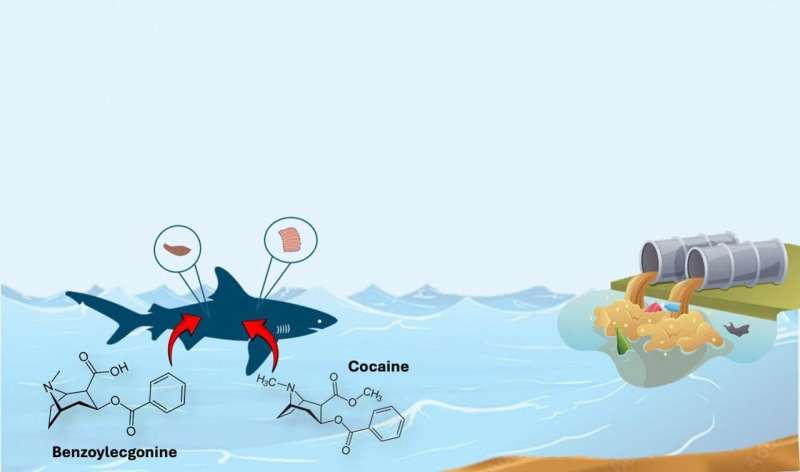July 23, 2024 report
This article has been reviewed according to Science X's editorial process and policies. Editors have highlighted the following attributes while ensuring the content's credibility:
fact-checked
peer-reviewed publication
trusted source
proofread
Cocaine found in muscle and liver of sharpnose sharks off coast of Rio de Janeiro

A team of marine biologists and ecotoxicologists affiliated with several institutions in Brazil has found cocaine in muscle and liver samples collected from Brazilian Sharpnose sharks harvested off the coast of Rio de Janeiro. Their study, published in the journal Science of the Total Environment, highlights the potential impact of the presence of illicit drugs in marine environments.
Prior research has suggested that much cocaine winds up in the ocean via wastewater from sewage systems, drainage from labs and packages abandoned by traffickers attempting to prevent discovery. What is not known is how long the drug persists in the sea and what impact it has on ocean life. For this new study, the research team tested Brazilian Sharpnose sharks, a small variety that makes its home in the shallow waters along many of Brazil's coastal areas.
The researchers purchased 13 of the sharks from local fishermen. Each was dissected in the lab, where the team also collected muscle and liver samples and assessed them with tandem mass spectrometry. They found cocaine in all the samples at concentrations approximately 100 times higher than observed in any other marine animal.
The researchers suggest their findings are just a starting point regarding research into the presence of cocaine in the sea. They note that it is not known what sort of impact the cocaine might have on the sharks. They do not know, for example, if it impacts their behavior, as it does humans, or if it impacts other functions such as their reproductive abilities.
Other toxins in shark livers, they note, have been found to reduce the production of vitellogenin, which becomes the yolk in their eggs. Other studies, they point out, have shown that cocaine can harm mollusks by damaging their DNA. They suggest more work is required to find the source of the cocaine to prevent its introduction into the sea.
More information: Gapriel de Farias Araujo et al, "Cocaine Shark": First report on cocaine and benzoylecgonine detection in sharks, Science of The Total Environment (2024). DOI: 10.1016/j.scitotenv.2024.174798
Journal information: Science of the Total Environment
© 2024 Science X Network


















